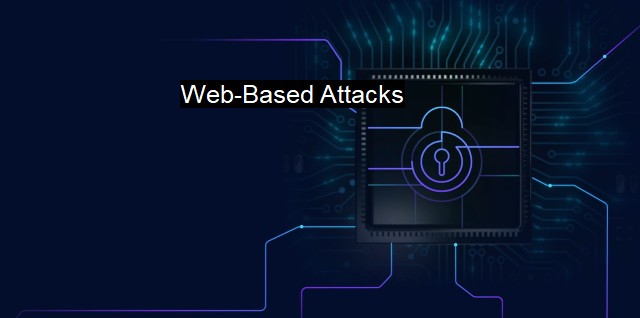What are Web-Based Attacks?
Web-Based Attacks: Understanding the Evolving Threat Landscape in Cybersecurity and Implementing Effective Antivirus Measures
Web-based attacks form an integral part of the cybersecurity landscape, ranging from minor incidents to significant breaches involving billions of user records. Within the purview of cybersecurity, they are unauthorised actions performed by hackers for gaining access to a system's web assets or infrastructure by manipulating weaknesses in its security model or web designing aspects.Web-based attacks exploit vulnerabilities in a web application's coding or structure, bypassing the system's antivirus measures geared towards traditional malwares, which don’t necessarily counter such attacks. These attacks constitute a significant repercussion of the nature of the internet's structure focusing on the sharing and access to information.
A typical cyber attack involves an attacker or malware exploiting system vulnerabilities, asserting dominance over the computer's functioning, affecting its operations, stealing or corrupting data, wrongfully accessing sensitive data, and even interrupting business mechanics. Web-based attacks predominantly include techniques such as cross-site scripting (XSS), SQL injection, and clickjacking.
XSS enables attackers to inject client-side scripts into web pages viewed by other users, thereby bypassing access control measures like the same origin policy. The attacker can quickly gather crucial data from unsuspecting users and create other problems for the victim, often leaving a long-lasting impact on the individual or organization’s digital identity.
SQL injection manipulates existing code structure to append or restructure code entries in unpredictable ways, allowing attackers to modify the system's interactions according to themselves. It involves sending malicious SQL code as a part of user input commands to an application to perform unauthorized actions. this can disrupt inventory, capture proprietary data, and disrupt business continuity.
Clickjacking is a strange yet hugely commonplace method, also known as a User Interface redress attack. It manipulates the trust users have on the sites they frequently visit, linguistically forcing them into undertaking undisclosed activities such as downloading malware or obtaining personal details with clicks hidden beneath the user interface.
Attackers persistently employ these practices to exploit the detailed nature of contemporary web applications. Whether launching a detrimental viral function or worm, submitting fraudulent transactions, or levying Distributed Denial of Service (DDoS) attacks on server hosts, the avenues for perpetrating these attacks are numerous.
Web-based attacks also constitute organized crime specifically targeted towards e-commerce, where attackers drain the financial resources, personal and credit card details of online consumers. These cybercriminals are dramatically evolving and instantaneously changing techniques according to the state-of-the-art preventive measures.
Advancements in cloud computing and computer networks – IoT devices, robots, drones, or smart home devices – create a new playground for web-based attacks, posing unprecedented security challenges, which significantly challenge our collective cybersecurity paradigms.
Fortunately, the antivirus industry that typically focuses on malware spread through traditional channels, such as mass-mailing worms and trojans, is evolving to recognize and mitigate the new and emerging risks related to web-based attacks. There is an ever-increasing awareness about integrating "Secure by design" principles in web application development today.
Ghost protocols have also been devised for intrusive behavior detection and preventing exploit payloads from causing functional glitches. regular penetration testing and vulnerability scans are part of standard operating procedures to quantify and profile possible web-based attack vulnerabilities.
Web-based attacks form a potent issue among the complex web of challenges confronting the cybersecurity infrastructure today. Measures extending traditional antivirus protection outreach, augmenting them with proactive security practices will help reduce such threats and support safer business operations in the internet-driven world.

Web-Based Attacks FAQs
What are web-based attacks in cybersecurity?
Web-based attacks are a type of cybersecurity threat that involve the exploitation of vulnerabilities in web applications, web servers, and other web-based technologies. These attacks typically involve the use of malicious scripts or code injected into web pages or web applications to steal sensitive data or gain unauthorized access to systems.What are the most common types of web-based attacks?
The most common types of web-based attacks include SQL injection attacks, cross-site scripting (XSS) attacks, cross-site request forgery (CSRF) attacks, and distributed denial of service (DDoS) attacks.How can I protect my organization from web-based attacks?
Protecting your organization from web-based attacks involves implementing a combination of proactive and reactive measures, including using strong passwords, regularly updating software and security patches, deploying firewalls and intrusion detection systems, and educating employees about safe web browsing and email practices. Additionally, utilizing advanced antivirus and endpoint protection solutions can help to detect and block the latest web-based threats before they can cause damage.What should I do if I suspect a web-based attack on my organization?
If you suspect a web-based attack on your organization, the first step is to disconnect the affected systems from the network to prevent further spread of the attack. You should also contact your IT security team or an experienced cybersecurity professional to conduct a thorough investigation and determine the extent of the damage. Depending on the severity of the attack, you may also need to notify law enforcement, customers, or other stakeholders.| | A | | | B | | | C | | | D | | | E | | | F | | | G | | | H | | | I | | | J | | | K | | | L | | | M | |
| | N | | | O | | | P | | | Q | | | R | | | S | | | T | | | U | | | V | | | W | | | X | | | Y | | | Z | |
| | 1 | | | 2 | | | 3 | | | 4 | | | 7 | | | 8 | | |||||||